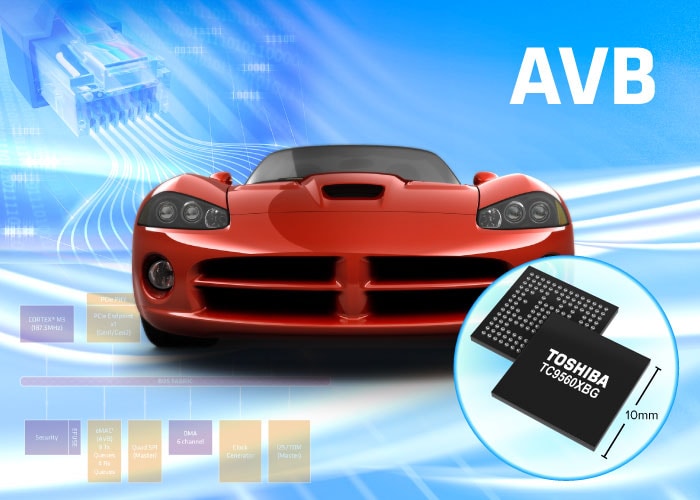- General Top
- SEMICONDUCTOR
- STORAGE
- COMPANY
-
My ToshibaSemicon
- Semiconductor Top
-
ApplicationsAutomotive
Body Electronics
xEV
In-Vehicle Infotainment
Advanced Driver-Assistance Systems (ADAS)
Chassis
IndustrialInfrastructure
BEMS/HEMS
Factory Automation
Commercial Equipment
Consumer/PersonalIoT Equipment
Healthcare
Wearable Device
Mobile
Computer Peripherals
-
ProductsAutomotive Devices
Discrete Semiconductor
Diodes
Transistors
Logic ICs
Analog Devices
Digital Devices
Wireless Devices
※
: Products list (parametric search)
Power SemiconductorsSiC Power Devices
※
: Products list (parametric search)
Isolators/Solid State RelaysPhotocouplers
Digital Isolators
Solid State Relays
Fiber Optic Transmitting Modules
※
: Products list (parametric search)
MOSFETsIGBTs/IEGTsBipolar Transistors※
: Products list (parametric search)
Diodes※
: Products list (parametric search)
MicrocontrollersMotor Driver ICsIntelligent Power ICs※
: Products list (parametric search)
Power Management ICsLinear ICs※
: Products list (parametric search)
General Purpose Logic ICsLinear Image SensorsOther Product ICsOther Product ICs
※
: Products list (parametric search)
-
Design & Development
Design & Development
Innovation Centre
At the Toshiba Innovation Centre we constantly strive to inspire you with our technologies and solutions. Discover how to place us at the heart of your innovations.
-
Knowledge
Knowledge
Highlighted Topics
Further Materials
Other
- Where To Buy
- Part Number & Keyword Search
- Cross Reference Search
- Parametric Search
- Stock Check & Purchase
This webpage doesn't work with Internet Explorer. Please use the latest version of Google Chrome, Microsoft Edge, Mozilla Firefox or Safari.
require 3 characters or more. Search for multiple part numbers fromhere.
The information presented in this cross reference is based on TOSHIBA's selection criteria and should be treated as a suggestion only. Please carefully review the latest versions of all relevant information on the TOSHIBA products, including without limitation data sheets and validate all operating parameters of the TOSHIBA products to ensure that the suggested TOSHIBA products are truly compatible with your design and application.Please note that this cross reference is based on TOSHIBA's estimate of compatibility with other manufacturers' products, based on other manufacturers' published data, at the time the data was collected.TOSHIBA is not responsible for any incorrect or incomplete information. Information is subject to change at any time without notice.
require 3 characters or more.
Ethernet Based Communication Set to be Foundation of Automobile Infotainment Systems

The car models now being developed and manufactured are very different from previous generations. Incorporation of increasingly sophisticated functionality (in terms of navigation, telematics and entertainment) mean it would no longer be correct to consider them as simply a mode of transport. Though this is still clearly their primary purpose, they now possess various other attributes as well. Many of these reflect the complex digitally-enhanced lifestyles we lead elsewhere - while we are in work, in public places, in our homes, etc.
The advent of what have become known as ‘connected cars’ has meant that vehicle occupants can access an abundance of information and media content, supplied in all manner of different forms. This has serious implications however, as bandwidth-heavy infotainment features are now placing greater demands on the associated data communication resources.
There are currently an expansive array of in-vehicle communication protocols that are being incorporated into automobile models. Many of them could, potentially, support this increasing demand for greater infotainment functionality. Among these are LIN and CAN - both of which are very well established, as they already provide the infrastructure needed for other functions (powertrain and safety related in the case of CAN, lighting and climate control related in the case of LIN). These have in recent times started to be complemented by emerging protocols, such as CAN-FD, FlexRAY and MOST. The suitability of these buses to address infotainment tasks is to some degree limited though. Each has certain characteristics that preclude them from being a fully optimised data transfer solution for this type of application. For some it will be the low speeds offered, for others it will be security or scalability issues that compromise their effectiveness.
Instead of relying on new protocols, the automobile industry is starting to look towards proven interconnection technology. Having gained universal acceptance in enterprise data communication and industrial control sectors, Ethernet seems to be the answer. Its high bandwidth plus inherent robustness make it highly appealing to automotive engineers.
Just one obstacle has to be overcome if widespread automotive uptake of Ethernet is to be achieved - that is the carrier sense multiple access with collision detection (CSMA/CD) aspect of Ethernet’s media access control mechanism. Though CSMA/CD more than adequately manages any contention that occurs between devices on the same bus in non-time-critical applications, if the Ethernet protocol is to attend to other requirements where latency cannot be tolerated, then steps must be taken to put a more deterministic arrangement in place.
Gigabit Ethernet audio-visual bridging (AVB) presents engineers with a stable, reliable platform on which high speed multimedia data transmission can be carried out without latency problems arising. The introduction of advanced semiconductor technology optimised for Ethernet AVB systems will accelerate the deployment of Ethernet technology within the automotive sphere.

